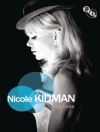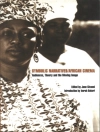This book brings together research from medical and film archives to illustrate the cultural impact of film and literature in its relationship to the discourse of plastic surgery in the 1920s. This different take on reading the body after the First World War enables students of multiple disciplines, and readers interested in both Hollywood and post-war culture, to understand some of the complexities of medical interventions gained after the First World War and the way in which they filtered into the world of Hollywood film making. It also allows readers who may not be familiar with these two 1920s stars to access the films of Lon Chaney and the books and films of Elinor Glyn and gain new insights into 1920s visual culture. For ease of readership, the book is organised so that each of the main chapters focuses on a particular film (either Lon Chaney or Elinor Glyn). This is particularly useful for use in the classroom or for online education. Readers can refer to the film directly, aided by illustrations of frames from the films. This book tells the story of how two stars of Hollywood film transformed their character’s faces on screen through a close reading of three films in the 1920s. It reveals how they applied their embodied knowledge of surgery and surgical procedures to broaden their audience’s emotional and intellectual understanding of the treatment of deformity and disability.
Inhaltsverzeichnis
Chapter 1: Introduction.- Chapter 2: Vilray Blair MD, Lon Chaney and The Phantom of the Opera.- Chapter 3: Beauty Regimes, Facial Surgery and Elinor Glyn’s Such Men are Dangerous.- Chapter 4: Masks, Prosthetics and Performance.- Chapter 5: Unveiling Romance, Elinor Glyn’s Man and Maid.- Chapter 6: In Conclusion, Visual Culture in the Archive.
Über den Autor
Alexis Weedon is Professor of Publishing Studies and Karen Randell is Professor of Film and Culture, both at the University of Bedfordshire, UK. Their British Academy funded project explores attitudes to the reconstructed body through the creative work of these two Hollywood stars of the 1920s. Their research investigates medical procedures, photos and diaries located at archives in the UK and USA to analyse five films which creatively and successfully addressed the latent fears of technologizing the body.












